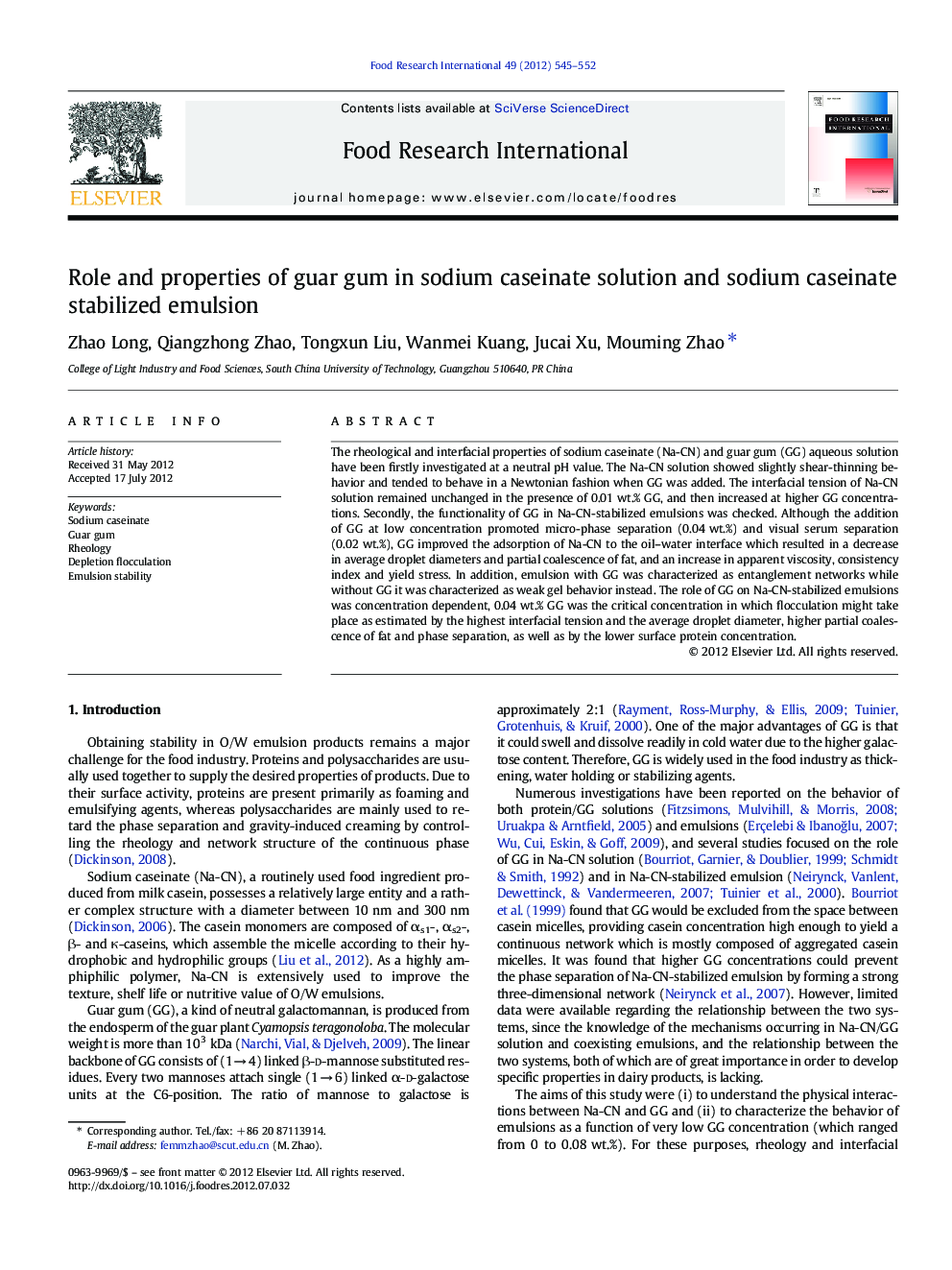| Article ID | Journal | Published Year | Pages | File Type |
|---|---|---|---|---|
| 6399195 | Food Research International | 2012 | 8 Pages |
The rheological and interfacial properties of sodium caseinate (Na-CN) and guar gum (GG) aqueous solution have been firstly investigated at a neutral pH value. The Na-CN solution showed slightly shear-thinning behavior and tended to behave in a Newtonian fashion when GG was added. The interfacial tension of Na-CN solution remained unchanged in the presence of 0.01Â wt.% GG, and then increased at higher GG concentrations. Secondly, the functionality of GG in Na-CN-stabilized emulsions was checked. Although the addition of GG at low concentration promoted micro-phase separation (0.04Â wt.%) and visual serum separation (0.02Â wt.%), GG improved the adsorption of Na-CN to the oil-water interface which resulted in a decrease in average droplet diameters and partial coalescence of fat, and an increase in apparent viscosity, consistency index and yield stress. In addition, emulsion with GG was characterized as entanglement networks while without GG it was characterized as weak gel behavior instead. The role of GG on Na-CN-stabilized emulsions was concentration dependent, 0.04Â wt.% GG was the critical concentration in which flocculation might take place as estimated by the highest interfacial tension and the average droplet diameter, higher partial coalescence of fat and phase separation, as well as by the lower surface protein concentration.
⺠Interfacial tension of Na-CN was unaffected or increased in the presence of GG. ⺠The role of GG on the emulsions was positive and concentration dependent. ⺠Micro-phase (0.04%) and visual serum (0.02%) separation occurred in emulsion. ⺠0.04 wt.% GG was the critical concentration in which flocculation might take place.
